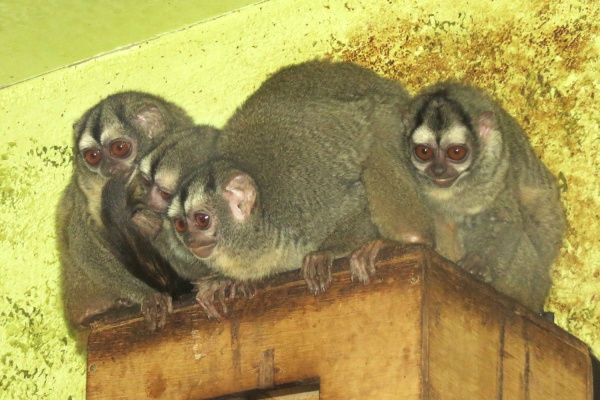Facts About Lemurine Night Monkey
The gray-bellied night monkey, also known as the grey-legged douroucouli or lemurine owl monkey, is a delightful primate from the New World, part of the Aotidae family. Native to the lush tropical and subtropical forests of South America, these monkeys face significant threats due to hunting, habitat destruction, and capture for pharmaceutical research.
Historically, the gray-bellied night monkey was classified into four subspecies. However, three of these are now recognized as separate species. Interestingly, Hershkovitz's night monkey is no longer considered a distinct species but is synonymous with A. lemurinus.
In terms of appearance, these nocturnal monkeys are quite distinctive. They have large, expressive brown eyes and bushy white eyebrows that give them a curious look. Their fur is dense and woolly, colored in varying shades of gray. They have slender limbs, long fingers, and a non-prehensile tail. Adults can weigh up to 1.3 kilograms, with no significant size difference between males and females.
Gray-bellied night monkeys thrive in both dry and moist forest areas, generally staying within the canopy. They prefer dense vegetation with numerous vines for swinging. Their diet is diverse, comprising fruits, vegetation, insects, nectar, and occasionally small mammals and birds.
These monkeys are most active during twilight and on bright, moonlit nights. They live in family groups, typically consisting of a mated pair and their offspring. They are known for their strong monogamous bonds, with males taking on most of the caregiving duties. Communication is achieved through a range of vocalizations and scent-marking their territories.
Reproduction in gray-bellied night monkeys peaks at the end of the dry season and the middle of the wet season. Gestation lasts about 133 days, usually resulting in a single offspring. Young monkeys reach sexual maturity between 2.5 to 3.5 years and then leave their family group to find a mate and establish their own troop.

 Ecuador
Ecuador